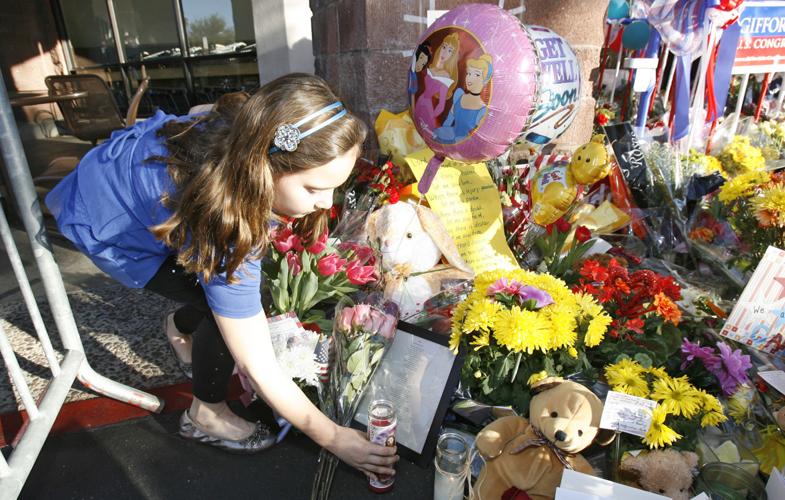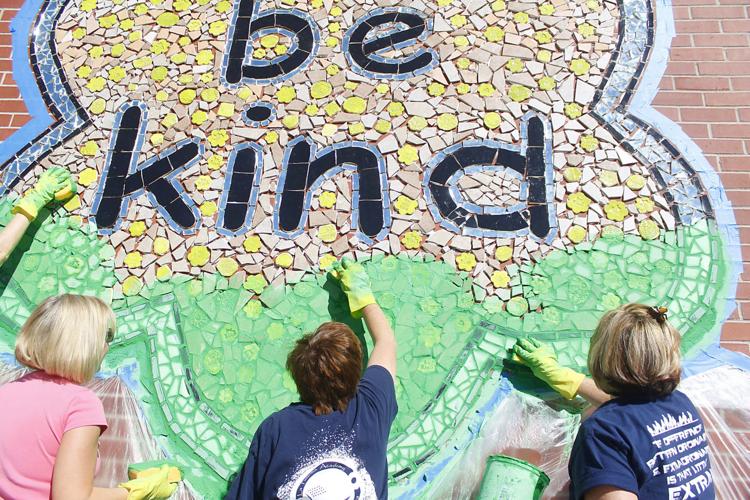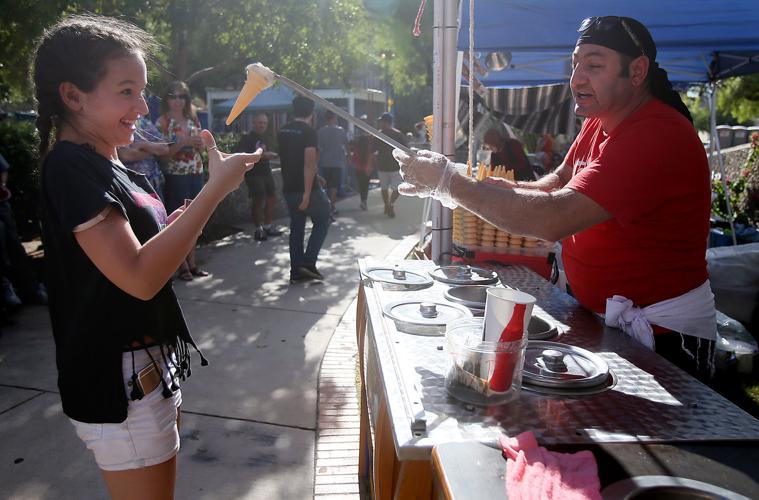Terrorism. Shootings. Racial violence.
Turn on the news any day of the week and you're bound to see something bad going on somewhere in the world — often in your own backyard.
Our first reaction might be to shelter our kids from these news events or to change the subject when they bring it up.
But, experts say that might not be the best thing to do.
So, how do we approach the subject in a way that isn't scary?
We asked a couple local experts for advice on how to have these conversations with our kids.
Gustavo Perez is a psychologist for the Pima County Juvenile Court center. Krista Fields is a counselor at Sycamore Elementary.
Should we just pretend nothing happened?
In short, the answer is no.
"We are a country where we have an ongoing set of serious, difficult events," Perez said. "I was reading that we had 49 mass shootings in the month of July in the U.S. So, there is this reality of violence that has reached our daily lives and has unfortunately been part of our children's lives or their friends' lives."
Though our first instinct might be to ignore the situation, kids are inquisitive by nature, so their first inclination is to try and understand what's going on.
"One mistake we can make as parents or educators is to ignore it. If we stay silent, somebody else is gonna fill the emptiness," Perez said. "We are the translators of events to them. They have limited life experiences, so it's our job to make sense of what's happening."
What age should my child be when we talk about it?
Perez: With children younger than 7, we should try not to be explicit or too detailed.
"They should not be exposed to images of shootings. At 7 or 8 they start to be more cognizant of things. It's also the ages where other kids are gonna start bringing the topics to their conversations...We must make it a point, especially with children who are 8 years or older, to talk about the difficult times in our country and in the world."
Fields: "In elementary school we tend to look at students in two different age groups, ages 5/6-8 and then 9-11 (primary and intermediate).
Younger kids are likely to hear about the news or see it but not know or understand the details or vocabulary used in a piece. It is recommended that kids this age are limited to or do not view violent acts/information on television and if parents want to expose their kids to these topics they choose to listen to the news instead."
How do I have the conversation?
Perez: "We should start by making space to have this conversation. First, listen to see what they know. What are the questions they have? Ask them 'have you heard about that happened in France? There was something where many people died. Have you heard bout it?' Then help them integrate that into what's true and what's not true."
"With little kids, casually open the topic more in a general way...Maybe you want to read a story about somebody ticking somebody off or a story about being afraid and see what that opens up. Just by paying attention we can learn a lot."
Fields: "Many times younger students will act out events they may hear on the news, for example: war, police shootings, natural disasters, etc. This is natural as when children are feeling unsure about these events they will act them out in play. This provides them the opportunity to control their thoughts about the event, attempt to understand the event, or control the outcome of event. If parents see these things it is important to start a dialogue with their child such as “I notice you were playing police, would you tell me more about that?” or “I noticed you were playing that there was an earthquake, would you share with me more about that?” We need to ask our kids open ended questions without providing too much detail about events as we want to understand what they may already know."
"Older students will have more exposure to the news and media, especially as their classrooms review current events and students come to school and talk with their friends about the world. It is important that if we are unsure about our kids’ knowledge of a topic we ask them. For example, “Did you hear about the police shooting?” If the child says yes, then we ask them a follow up question about what they may have heard. It is important at this age to listen, without correcting, until they are done. If we correct our older students too early in a conversation by interrupting, they may shut down and not engage in conversation with us. Watching the news with our kids will help us to monitor what they see/know."
How do I make my child feel safe?
Perez: "Children and teenagers, they really need to feel safe. They need to feel they live in a world where they are ok, where somebody is gonna protect them. One of our jobs as parents or educators is to really help them maintain a sense of safety in a difficult world and violent world. Help them recognize the many ways the world is special and where good things happen every day in our city. Give them concrete examples of how even though we have a lot of bad news, the world is full of good people…Even in your house, in your school a lot of good is still happening and we should not live in fear but live in appreciation of a lot of goodness and positive happening in their lives."
Fields: "With both ages it is crucial that we listen (a lot), answer questions they have (making sure not to give to much detail for their age), and ensure their safety. Many times kids understand they cannot control the things around them, but they want to know they are safe and parents are the best at reassuring children of their safety.
It might be hugging them, saying they are with them and they are safe. It might involve going into a plan of action in case of emergencies and helping them to understand there are always helpers in our lives. With this I am often reminded of Mister Roger’s quote “ When I was a boy and I would see scary things in the news, my mother would say to me, “Look for the helpers. You will always find people who are helping.” Help them to understand what a helper may look like or sound like."
Exposure to diversity and empathy
Perez: "We really have to provide opportunities for our children to be exposed to diversity...to go beyond their family and mix with others who may not be like them to see what every person brings to others’ lives...Like Tucson Meet Yourself. Every time I go I'm surprised by how many types of people live in my city. I think making an effort to really reach out and connect and cross bridges to really expose the kids to diversity in a positive way.
Watching the Olympics I made a comment to my kids that we are a country of many types of people and cultures. That type of conversation we should have every day in our families, schools and communities…to understand the other and recognize how much we can learn from each other...Then it's hard to demonize others. Isolation breeds hate...

Ali Han has some fun as he serves Turkish ice cream during the annual Tucson Meet Yourself event downtown.
Fields: "The more we react as parents to violence being commonplace we teach our kids it is a way of life, instead of developing their sense of empathy and creating change agents in our community and society. One aspect in talking with our kids about violence is what could have happened differently, opening conversations about social justice, and teaching our kids how to respectfully disagree with another person."
The value of teaching kindness
Perez: Figure out how to provide kids with access to what I call safe spaces of peace. Are we building that in our families with language? Are we being kind to each other? Are we embracing our kids? I feel we don't really do enough to educate our kids on the value of being kind to each other. If we do that every day it will build a foundation to make us stand strong in sudden violent events that unfortunately continue to happen."

Kathleen Phillips, Debbie Childress, and Karen Crandall help fill in the green grout to the Ben's Bells mural in front of La Paloma Academy in 2014.
Fields: Currently in schools many teachers are working on these aspects in their classroom by focusing on peer mediation, conflict resolution, and collaborative work that involves teaching students how to respectfully disagree with each other. Schools are also working with Ben’s Bells to support a Be Kind campus and sustain a Be Kind club that focuses on kindness education. Involving our kids with helping someone else (neighbor, school, non profit agency, friends, etc.) and seeing outside of themselves can support their understanding of empathy and how to positively interact with the world."
Kid-friendly news sites
If your kids love knowing the news or you want to make sure they are informed, but worry about the impact it may have on them, Fields recommends watching it with them so you can monitor what they see and how much they know.
You can also bookmark some kid-friendly websites on their computers. Time for Kids, Scholastic News and CNN Student News all address current events in kid-friendly language.







